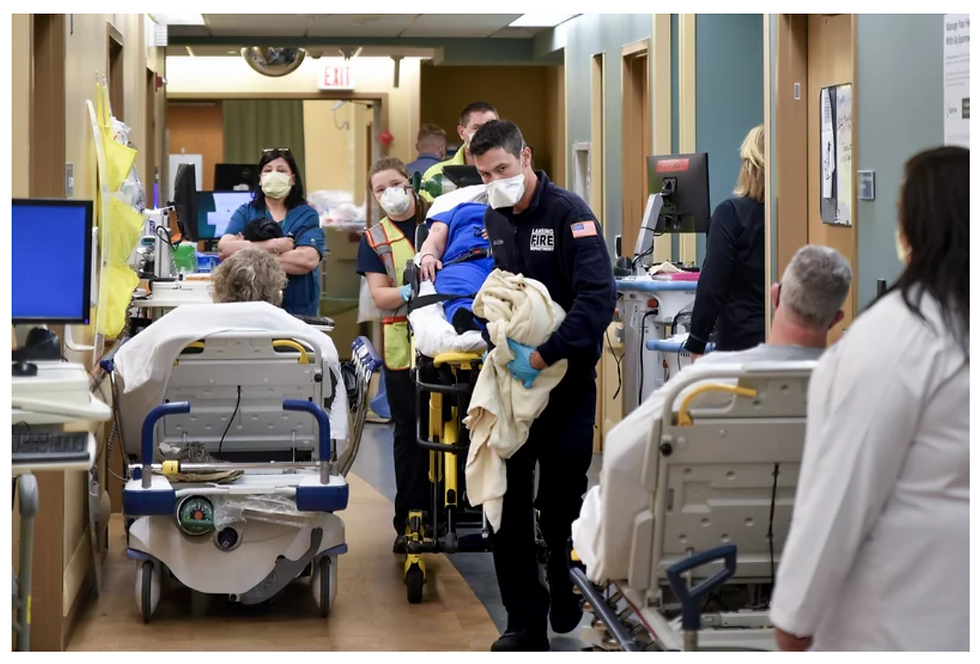Embracing Virtual Nursing for Wound and Ostomy Care
- katherinepiette
- Aug 6, 2024
- 3 min read
Mary McNeil, BS, RN, CWOCN

In the world of wound and ostomy care, our patients often present with complex medical needs. Managing their care requires specialized knowledge, keen attention to medical and psychosocial needs, and a compassionate approach. Board certified wound and ostomy nurses are well equipped to manage this care regardless of the care setting. However, the increasing demand for Wound, Ostomy, and Continence (WOC) Nurses far outpaces the supply, creating significant challenges in delivering optimal care.
As the healthcare landscape evolves, one solution to this challenge is the integration of virtual nursing. With patients sometimes facing difficulties traveling to healthcare facilities, virtual support offers a practical and patient-centric alternative. The rise in comfort and familiarity with technology among patients and healthcare providers alike means that telehealth is becoming a viable option to meet their needs.
The cornerstone of an effective telehealth and telenursing model is trust. Building and maintaining trust with both patients and providers in a virtual environment is crucial. Fostering this trust requires transparency, flexibility, customization, and exceptional follow-through. By effectively leveraging technology, we can provide high-quality care that patients and providers can trust and rely on despite the physical distance.
Consistency in care delivery is paramount. Virtual nursing should complement and enhance the continuum of care, ensuring that patients receive consistent and coordinated support throughout their healthcare journey. This coordinated approach helps maintain the high standards of care that our patients deserve.
Strengthening Our Ranks Through Partnerships
Partnerships within our professional community only enhance our ability to deliver exceptional care. Collaborating with fellow wound and ostomy clinicians, physicians, and providers strengthens our collective knowledge and resources. This unity is vital as we navigate the challenges and opportunities presented by virtual nursing.
Flexibility is key in the adoption of virtual nursing. Adapting to new ways of working and being open to innovative solutions that can improve patient outcomes will remain the ideal way to grow the network of excellence and maximize patient outcomes. Additionally, advocating for the necessary resources to support virtual care is essential. This includes ensuring access to reliable technology, adequate training, and the development of robust and trusted telehealth protocols.
The Future of Healthcare
The healthcare industry is increasingly adopting virtual nursing, recognizing its potential to bring specialized care to those who need it most. By embracing this shift, we can address the shortage of would and ostomy clinicians, improve access to care, and ultimately enhance patient outcomes. As we continue to navigate this evolving landscape, our commitment to excellence, flexibility, and advocacy will be crucial in shaping the future of wound and ostomy care.
By incorporating virtual nursing into our practice, we are not just keeping up with the times—we are leading the way in providing innovative, accessible, and patient-centered care. Let's embrace this change and work together to ensure that our patients receive the best possible support, no matter where they are.
About Corstrata
Corstrata is a virtual care solution that utilizes technology to provide access to scarce certified wound, ostomy, and continence nurses (WOCNs) at the patient's bedside in post-acute provider settings, including home health, hospice, skilled nursing facilities, and emerging hospital-at-home providers across all 50 states. Corstrata's team of WOC nurses provides consultations with provider staff at the patient's bedside, either through HIPAA-compliant video or through review of store-and-forward wound images, to improve clinical and financial outcomes for providers. To learn more about how Corstrata can help your organization better support your staff, visit www.corstrata.com.




Comments